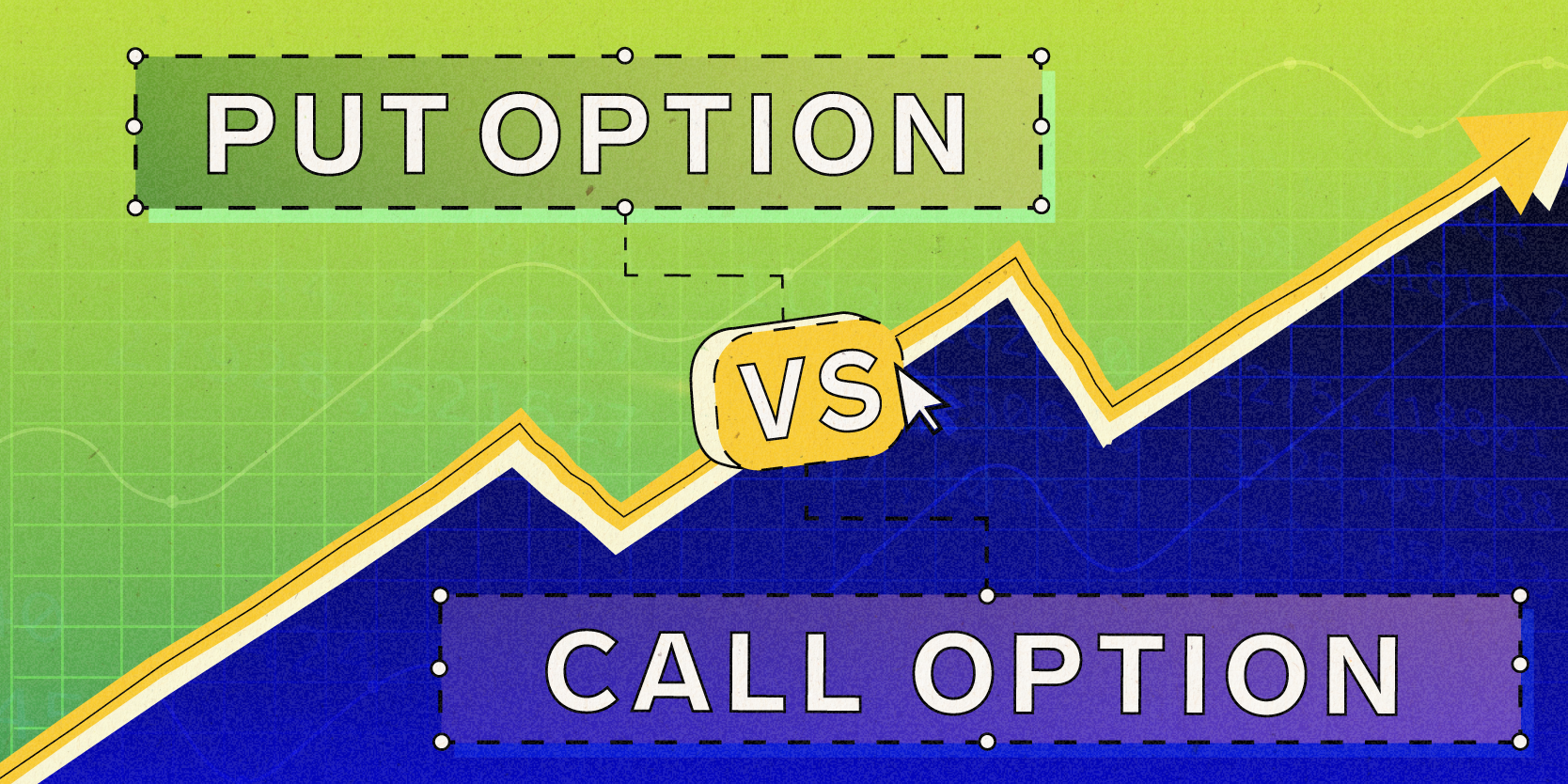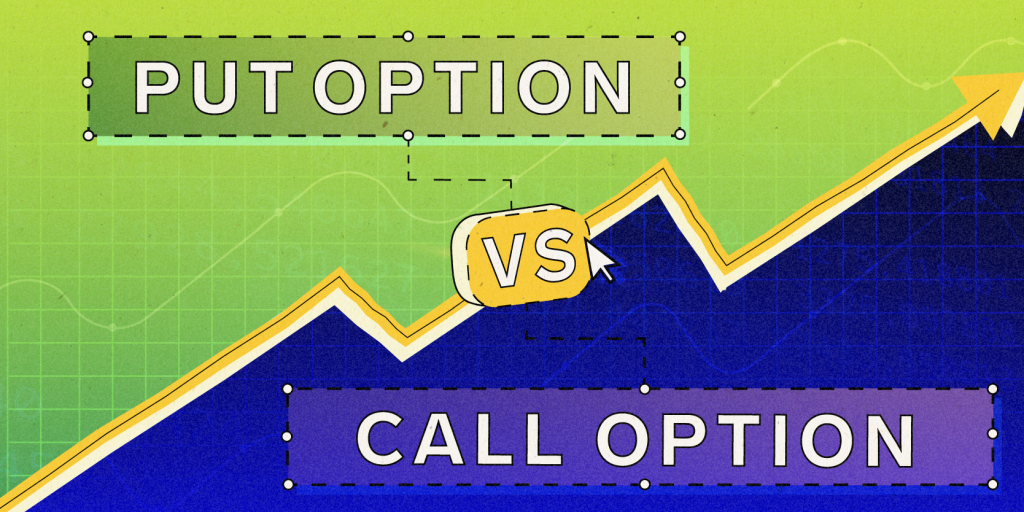
Alyssa Powell/Insider
- Call and put options give you the right to buy and sell shares of stock at a set price during a specific period of time.
- Both options require that you pay a nonrefundable premium, which you risk losing if you don't exercise the option.
- Both types of options come with the potential to earn and lose money on your investments.
- Visit Insider's Investing Reference library for more stories.
Everyone knows investing is a risk. You never know for sure what the market is going to do. But investors can use this to their advantage by buying and selling put and call options. These are contracts that give the option holder the right to buy or sell shares of stock at a set price during a specific period of time. Each type can result in earning profits or generating losses, depending on whether you're a buyer or seller – and how the market impacts a stock's price.
Here is a closer look at put and call options, what you need to know about each, and how you can use them as part of your investment strategy.
Put option vs. call option: At a glance
Options are contracts between investors that give the holder the right to buy or sell an underlying asset (such as a stock) at a fixed price (also called the strike price) on or before a specific date in the future. You pay a premium to own options and you're not obligated to use them. But if you sell an option, you have to provide the asset to the holder if and when they use (also called exercise) their option.
Options are bought and sold among institutional and individual investors, brokers/professional traders, and other participants in the market. There are two types of options:
- Put option: Gives the holder the right to sell a number of assets within a specific period of time at a certain price.
- Call option: Gives them the right to buy assets under those same conditions.
You can buy or sell options, depending on what your investing goals are. If you purchase options, the most you can lose is the amount you paid for the premium since you're not obligated to exercise the option. You risk losing more if you sell options since you're legally obligated to fulfill the terms of the contract regardless of market value for the underlying assets.
"Options are merely side bets between investors," says Robert Johnson, professor of finance at Creighton University. "No net wealth is created in the options market. What one party gains, the other party to the contract loses an equal and opposite amount."
What is a put option?
If you own a put option, you have the right to sell a share of stock at a strike price agreed upon at the time the contract was created up until an expiration date. You'll pay a non-refundable premium for each share your put option is written for.
For example, you might purchase a put option on a share of stock at a strike price equal to the spot price, which is the current amount the stock is being traded for at the moment. You think the stock value will go down before the option's expiration date and you want to be able to sell your share at a price that's above market value. You would buy your share at the spot price, sell it at the strike price and collect a profit on the difference, minus the amount you paid for the option premium.
This is the ideal situation, which may or may not actually happen. If the market value of your share stays the same or goes up, you would just let the option expire. You'll be out the premium you paid for the option, but you won't lose any of the value of the share itself.
If you already own shares of stock and think the market price will go down, you may decide to purchase a put option as a way to hedge and protect your investment against volatility. Chris Telmer, associate professor of financial economics at Carnegie Mellon University's Tepper School of Business, calls this strategy risk management, as it limits the amount you can lose on a stock.
"The put option can put a floor on the value of the investor's stock portfolio," he explains. "This is exactly the same as 'buying insurance' on the possibility that the stock price goes down … If an investor already owns shares of a particular stock and wants to purchase insurance against the stock price falling, [they] should buy put options."
You can also sell put options on an underlying asset. This gives the option holder the right to sell you the amount of stock outlined in the contract at the strike price. You have to purchase that stock at that price if and when the option is exercised, even if the spot price is well below the strike price. You will have initially earned money on the premium you charged for that option, but could end up losing much more in this situation.
| Pros | Cons |
|
|
What is a call option?
A call option gives you the right to purchase stock at a specified price up until an expiration date. The hope is that before the option expires, the stock price will be greater than the strike price, enabling the holder to buy shares below market value. The profit gained is the difference between the spot and strike prices, minus the premium originally paid for the option.
Again, this is the ideal situation. If the stock price remains the same or goes down before the call option's expiration date, there's nothing to be gained by exercising the option. You would simply let it expire worthless and take the loss of whatever you paid for the premium.
Buying call options can be a good idea if you think the price of a particular stock is going to increase within the time the option is valid. Telmer says buying call options gives investors greater exposure per dollar invested.
"The call option gives the investor leverage in much the same manner as would borrowing to invest in the stock," he explains. "This means that if the stock goes up, the investor earns a higher return by using a call option rather than directly buying the stock. [However,] if the stock price goes down, [you] will lose a bigger fraction of [your] investment by using the call option relative to directly purchasing the stock."
Like with put options, you can also sell call options. You also face the same risks. If you own shares of a stock, you can sell a covered call option and collect a premium for each share. If the option is exercised, you have to sell those shares of stock at the strike price to the holder even if the spot price is lower. You will have the loss of value, but won't have to pay any additional money.
You could also sell a naked call option, which can be very risky. This kind of option obligates you to purchase shares of stock at the spot price when the option is exercised and then sell those shares to the holder for the strike price. Since you're paying out-of-pocket for shares that could potentially be selling for more than you'll be getting from the option holder, you could lose a substantial amount of money.
| Pros | Cons |
|
|
The financial takeaway
Overall, being the buyer of a put or call option is often the safest move when investing in options. The most you stand to lose is the premium you pay for the option and you can either make a profit or mitigate losses you might experience if the market declines. Selling put and call options hold the most risk for investors, but can also generate profits that can be worth the investment.
When you're dealing with options, you're always speculating about what the market will do. There are never any certainties, so all you have is your best guess as to what the future will hold. It's always best to consult with a financial professional with experience dealing in options before making any money moves.
Dit artikel is oorspronkelijk verschenen op z24.nl
